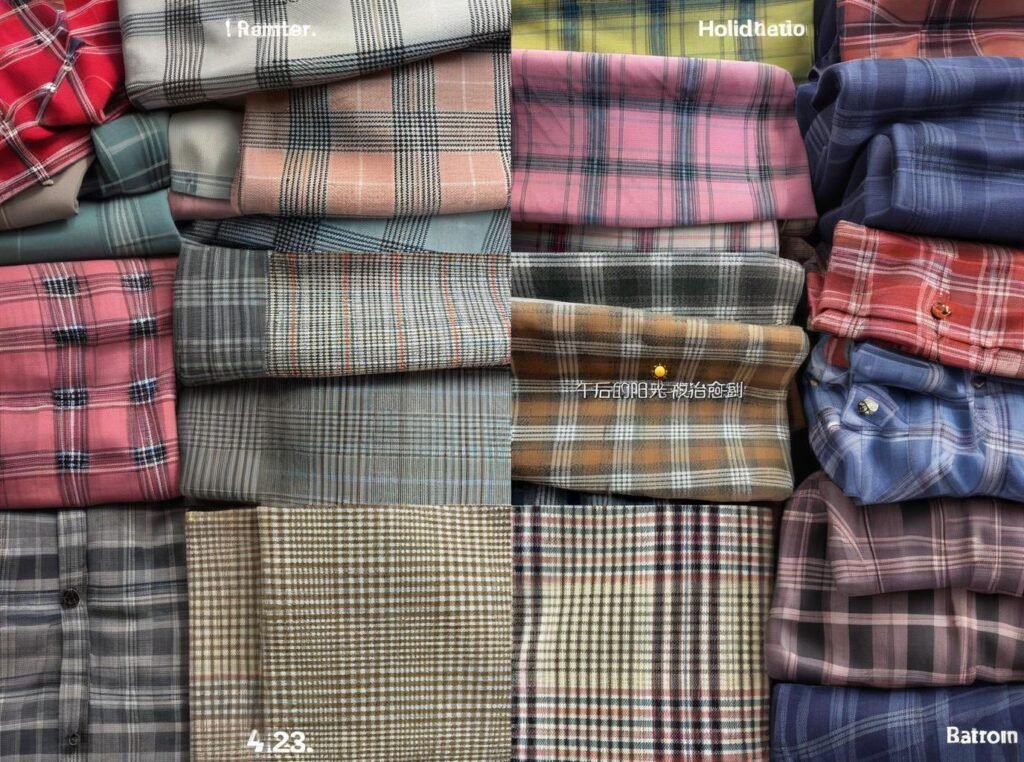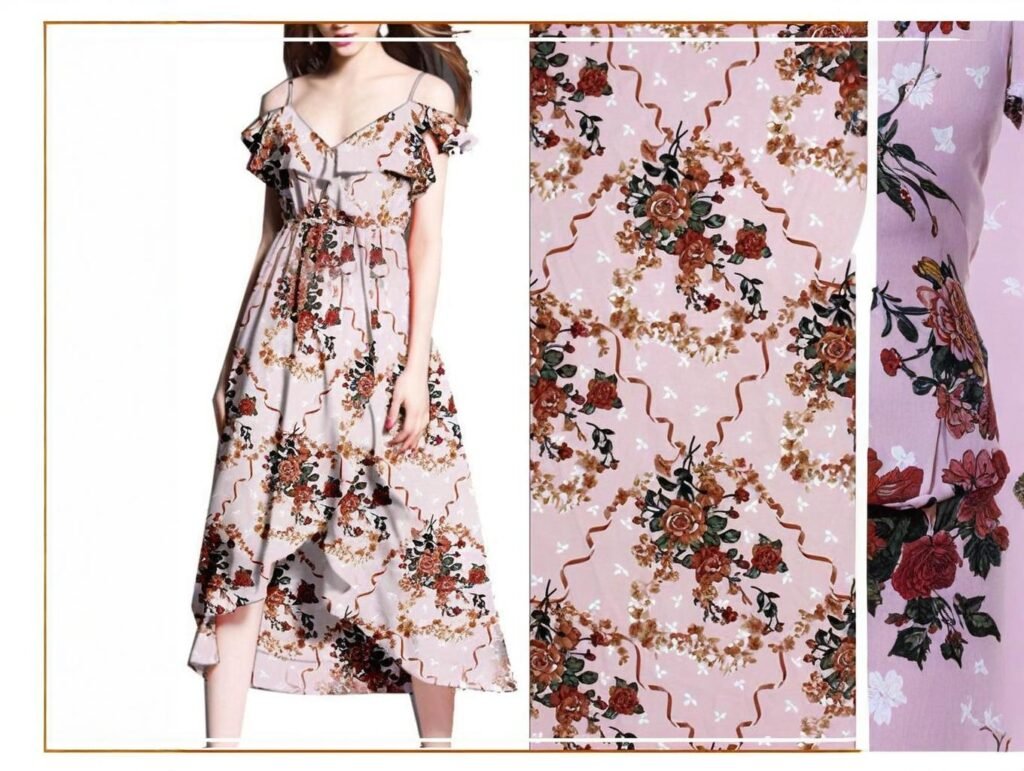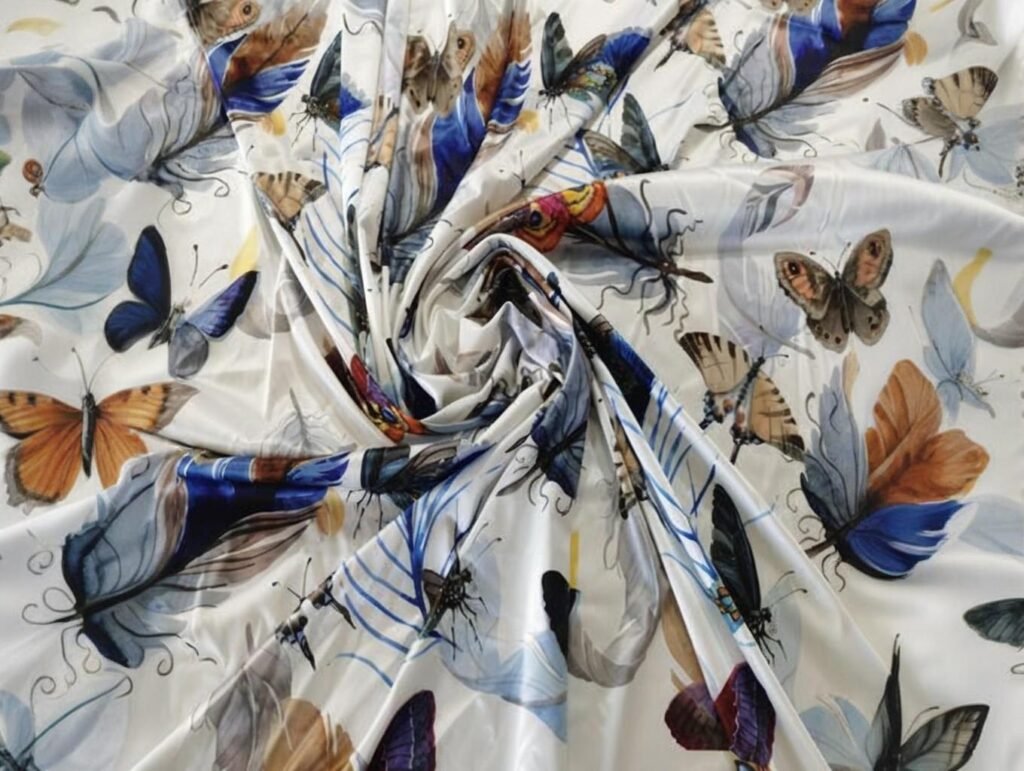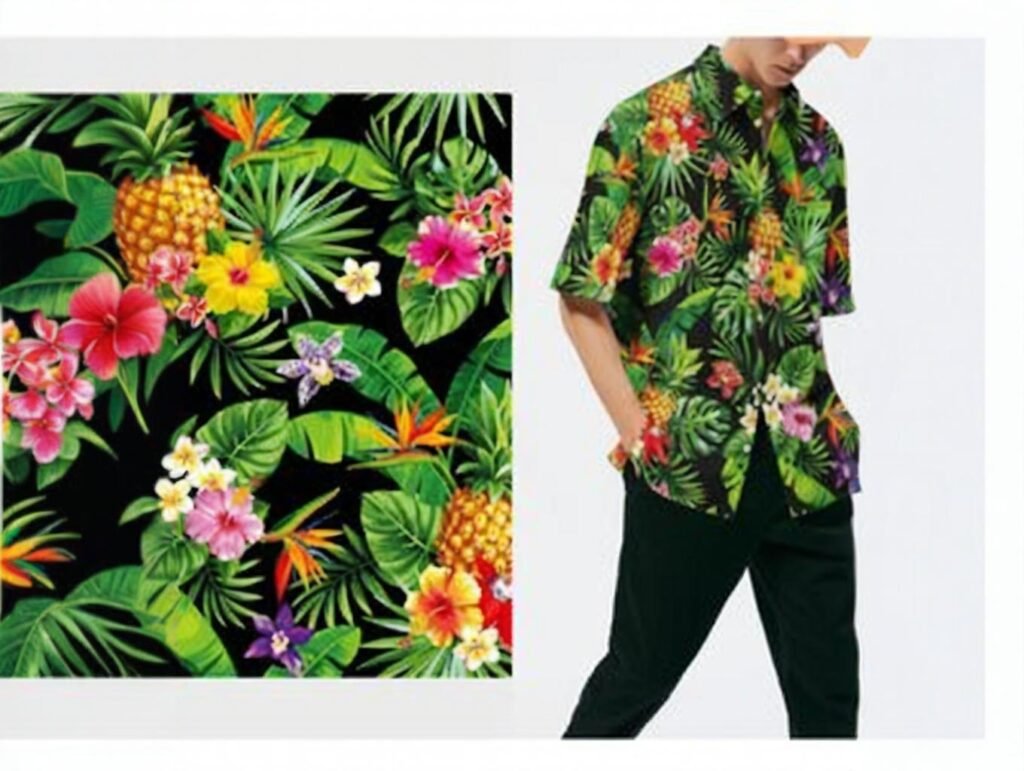When it comes to mass apparel production, the fabric you choose isn’t just about softness or durability—it directly impacts your product margins, production speed, supply chain efficiency, and customer satisfaction. In today’s competitive global textile market, choosing between cotton and polyester is a strategic decision that can define your brand’s identity and operational success.
Cotton is natural, breathable, and preferred for comfort; polyester is synthetic, resilient, and built for high performance. So, which fabric is truly better for large-scale clothing production?
Cotton is better for comfort and eco-conscious buyers, while polyester offers superior durability, cost efficiency, and consistency in industrial-scale manufacturing. The final choice depends on your target market, production goals, and product type.
To illustrate the real-world stakes, imagine this: A mid-sized apparel company in Portugal switched 60% of its T-shirt production from 100% cotton to a cotton-polyester blend. The result? They cut fabric costs by 18%, reduced shrinkage complaints by 75%, and halved their drying time during manufacturing. What seemed like a small material shift turned into a game-changer for profitability and product quality.
Let’s break down this decision with facts, figures, and critical analysis to help you make the smartest choice for your production line.
What Are the Key Differences Between Cotton and Polyester Fabrics?

Cotton is a natural cellulose fiber sourced from cotton plants, known for its breathability, softness, and comfort. Polyester, on the other hand, is a synthetic polymer derived from petrochemicals, valued for its strength, wrinkle resistance, and quick drying.
Cotton and polyester differ in origin, texture, performance, and sustainability profile. Cotton offers comfort and biodegradability; polyester offers durability and processing efficiency—each suited for different mass production strategies.
Comparing the Core Fabric Attributes
Material Origin & Composition
| Attribute | Cotton | Polyester |
|---|---|---|
| Source | Natural (cotton plant) | Synthetic (petroleum-based) |
| Fiber Type | Cellulose | Polymer (PET) |
| Biodegradability | Yes (compostable) | No (non-biodegradable, recyclable) |
| Moisture Handling | Absorbent | Moisture-wicking |
Comfort & Breathability
- Cotton allows more air flow, ideal for skin-contact garments like T-shirts and undergarments.
- Polyester feels less breathable but excels in performance wear by pulling moisture away.
Shrinkage and Wrinkling
- Cotton tends to shrink and wrinkle more easily.
- Polyester resists shrinkage and requires less ironing, a significant advantage for automated processing.
Color Retention
- Cotton may fade over repeated washes.
- Polyester holds color vibrantly, making it a top choice for activewear and uniforms.
Case Study Insight: A manufacturer of uniforms in Vietnam reported that their polyester-dominant product line retained color intensity after 80+ industrial washes, while 100% cotton versions faded significantly after 30 washes.
Critical Perspective
- Sustainability Trade-off: While cotton is biodegradable, it requires intensive water and pesticide usage. Polyester, although petroleum-based, can be recycled and used in circular production models.
- Processing Compatibility: Polyester performs better under high-speed production due to uniformity in yarn strength and reduced processing errors.
Which Fabric Performs Better in Large-Scale Apparel Manufacturing?
Polyester generally outperforms cotton in mass production environments due to its consistent quality, faster processing speed, and lower defect rate. However, cotton offers higher comfort and perceived value in certain market segments.
Evaluating Production Performance Metrics
Production Efficiency Table
| Metric | Cotton | Polyester |
|---|---|---|
| Weaving/Knitting Speed | Moderate | High |
| Drying Time (post-dyeing) | Longer | Shorter |
| Shrinkage Rate | High (up to 7%) | Low (below 2%) |
| Defect Rate (warp/yarn) | Higher due to natural fibers | Lower due to uniform filaments |
| Machine Cleaning Frequency | More frequent (natural lint) | Less frequent |
Fabric Handling in Automation
- Polyester is machine-friendly, resulting in fewer interruptions on automated looms and fewer rejections during inspection.
- Cotton requires more quality control steps due to natural inconsistencies, increasing overall labor input.
Case Example: An apparel factory in Bangladesh reduced machine downtime by 32% after switching from cotton interlock to polyester double-knit for sportswear production. Polyester’s consistency led to smoother runs and lower maintenance needs.
Critical Perspective
- Labor Cost Impact: Polyester requires less manual handling and fewer post-production corrections, lowering labor costs per unit.
- Brand Perception vs. Process Optimization: Premium brands may still favor cotton for customer preference, even if polyester is more efficient operationally.
- Blend Strategy Opportunity: Cotton-poly blends (e.g., 60/40 or 80/20) offer a middle ground—balancing comfort and production ease.
How Do Cotton and Polyester Compare in Terms of Cost Efficiency?
Polyester is generally more cost-efficient than cotton for mass apparel production due to its lower raw material cost, faster processing times, and reduced wastage. However, cotton may offer better ROI for premium or eco-conscious segments where product value justifies higher cost.
Breaking Down the Total Cost of Ownership (TCO)
Cost Structure Comparison Table
| Cost Category | Cotton (per kg) | Polyester (per kg) | Notes |
|---|---|---|---|
| Raw Material Price | $2.00–$3.50 | $1.00–$2.20 | Polyester is more price-stable, cotton fluctuates seasonally |
| Dyeing & Finishing Cost | Higher | Lower | Polyester absorbs dyes quickly and requires less water/energy |
| Fabric Waste Rate | 6–10% | 2–5% | Natural variability in cotton leads to higher offcuts |
| Labor & Handling | Higher | Lower | Polyester processes faster and needs less ironing |
| Shrinkage Compensation | Required | Minimal | Cotton requires oversizing or pre-shrinking steps |
Real-World Case: A Turkish T-shirt brand reported that their all-polyester collection was 22% cheaper to manufacture per unit than their organic cotton line—mainly due to labor savings and less fabric loss during cutting.
Critical Perspective
- Volatility Matters: Cotton prices are sensitive to weather, geopolitical supply issues, and farming trends. Polyester offers stable pricing and predictable supply, aiding long-term contracts.
- Cost vs. Brand Identity: Some buyers are willing to pay more for cotton due to its perceived “natural” luxury. A study by McKinsey in 2024 found that 43% of EU consumers prefer garments labeled “100% cotton,” even at a 10–15% markup.
- Blending for Cost Optimization: Many mass-market manufacturers use 50/50 or 60/40 blends to reduce costs while retaining a “cotton feel.” For instance, fleece hoodies often use 80% cotton for touch and 20% polyester for shape retention.
Key Takeaway
If you’re looking for scale, speed, and cost savings, polyester wins. But if your brand relies on premium or eco-conscious positioning, cotton may justify the higher price.
Is Polyester or Cotton More Suitable for High-Speed Production Lines?

Polyester is more suitable for high-speed production lines due to its consistent fiber quality, faster drying time, and lower defect rate. Cotton, while favored for comfort, slows down production due to more intensive processing needs.
High-Speed Production Compatibility Analysis
Speed & Throughput Metrics
| Production Step | Cotton Avg. Time | Polyester Avg. Time | Notes |
|---|---|---|---|
| Knitting/Weaving | 10–12 hrs | 6–8 hrs | Polyester yarns are more consistent and tangle less |
| Dyeing & Drying | 8–10 hrs | 4–6 hrs | Cotton needs more time to absorb and evaporate moisture |
| Cutting & Sewing | Slower | Faster | Cotton frays more and requires higher handling precision |
| Finishing (Pressing, QC) | More frequent | Less frequent | Cotton wrinkles more and often requires pressing before packing |
Factory Benchmark Example: A South Korean sportswear manufacturer reported that switching from cotton interlock to polyester micro-mesh reduced total garment processing time by 38%, allowing them to scale output without expanding factory space.
Critical Perspective
- Automation Compatibility: Polyester fabrics are more compatible with automated machinery, which relies on uniform tension and minimal stretch variation. Cotton’s irregularities increase machine recalibrations.
- Moisture-Related Delays: Cotton holds more water, extending drying cycles and slowing down dyehouse operations. This bottleneck often becomes the most time-consuming step in cotton-based lines.
- Energy Consumption & Environmental Trade-offs: Although polyester processes faster, it typically requires higher heat settings for fusing and printing. Cotton uses more water, but less energy-intensive heat treatments. Manufacturers must weigh energy cost vs. time efficiency.
Real Insight from SzoneierFabrics
At SzoneierFabrics, our customers in high-volume sectors like uniforms, promotional T-shirts, and sportswear typically lean toward polyester or blended fabrics. We’ve supported several clients in transitioning to poly blends to reduce production time by up to 40%, without sacrificing feel or print quality.
Are There Environmental Impacts to Consider When Choosing Cotton or Polyester?
Yes, both cotton and polyester have significant environmental footprints—cotton consumes more water and pesticides, while polyester relies on fossil fuels and contributes to microplastic pollution. The greener choice depends on lifecycle management, sourcing practices, and whether recycled options are used.
Environmental Impact Comparison
Environmental Metrics Table
| Environmental Factor | Cotton | Polyester |
|---|---|---|
| Water Usage (per kg) | ~10,000–20,000 liters | ~15–30 liters |
| Energy Consumption | Low to moderate | High (requires oil refining & heat) |
| Greenhouse Gas Emissions | Lower (approx. 1.8 kg CO₂/kg) | Higher (approx. 5.5 kg CO₂/kg) |
| Chemical Use | High (pesticides, dyes) | Moderate (dyeing & synthesis) |
| Biodegradability | Yes (100% natural) | No (unless biodegradable polyesters) |
| Recyclability | Rare (unless mechanically done) | Yes (especially rPET) |
Sustainability Considerations by Material
Cotton: The Natural Dilemma
- Cotton is biodegradable and compostable but ranks among the top three crops consuming global freshwater resources.
- Conventional cotton farming uses over 15% of the world’s pesticides.
- Organic cotton helps reduce chemical usage but has lower yields, requiring more land per unit of fabric.
Polyester: Energy Intensive but Recyclable
- Polyester is derived from crude oil and is non-biodegradable, but the rise of rPET (recycled polyester) has reduced dependency on virgin plastics.
- One recycled polyester T-shirt uses 33–53% less energy and reduces emissions by up to 54% compared to virgin polyester.
Case Study: H&M Conscious Collection H&M reports that their 2023 “Conscious” line used 80% recycled polyester and saved over 500 million liters of water compared to their cotton-based equivalent.
Critical Perspective
- Fast Fashion vs. Circular Fashion: Polyester’s recyclability makes it ideal for circular production models, especially when paired with mono-material garment designs.
- Longevity Matters: If a polyester garment lasts 3x longer than a cotton one, its carbon footprint per wear may be lower—even if its initial footprint is higher.
- Certification Insight: Look for OEKO-TEX®, GOTS (for cotton), and GRS (for polyester) to ensure environmental responsibility.
What Are the Most Common Use Cases for Cotton and Polyester in Fashion?

Cotton is commonly used in casualwear, underwear, and babywear due to its softness and breathability, while polyester dominates in activewear, uniforms, outerwear, and promotional apparel for its durability and performance benefits.
Fabric Use Case Matrix
| Apparel Category | Preferred Fabric Type | Rationale |
|---|---|---|
| T-Shirts (Casual) | Cotton or Cotton-Poly Blend | Comfort, skin-friendliness, breathability |
| Sportswear | Polyester | Moisture-wicking, durability, stretch |
| Baby & Infant Clothing | Organic Cotton | Hypoallergenic, chemical-free |
| Work Uniforms | Polyester or Poly-Cotton | Easy care, high durability |
| Formal Shirts | Cotton or Poplin (blend) | Texture, prestige, breathability |
| Jackets & Outerwear | Polyester (with coatings) | Wind resistance, insulation, durability |
| Promotional Apparel | Polyester | Lower cost, ease of printing, vibrant colors |
| Lounge/Underwear | Cotton | Soft hand-feel, absorbency, comfort |
Sector Examples
Example 1: Activewear Brand – USA A leading yoga wear brand uses 88% recycled polyester blended with 12% spandex for their leggings, citing sweat resistance and four-way stretch as primary requirements. Cotton was excluded due to drying time and fabric recovery issues.
Example 2: Luxury Shirt Maker – Italy A premium menswear company exclusively uses long-staple Egyptian cotton for its button-down shirts, commanding high price points with 300-thread count fabrics. Polyester was avoided to maintain brand positioning.
Example 3: Mass Promotional Firm – India One of India’s largest promo merch producers shifted from cotton to polyester for event tees due to easier sublimation printing and 30% lower unit costs.
Critical Perspective
- Design Intent Dictates Choice: Fabric selection must align with wearer expectations and usage conditions. Moisture management, comfort, and aesthetics all play key roles.
- Blends as a Compromise: Cotton-poly blends (commonly 60/40 or 80/20) are often the most functional solution, offering softness and cost-efficiency. Brands like Gildan and Hanes heavily use this strategy.
- Printing & Branding Needs: Polyester holds sublimation prints better, while cotton supports DTG and screen prints—choosing based on brand visuals is just as important.
Do Cotton and Polyester Fabrics Differ in Durability and Care Requirements?
Yes, polyester is generally more durable and easier to care for than cotton. It resists wrinkles, shrinkage, and abrasion better, making it ideal for heavy-use garments. Cotton, while comfortable and breathable, tends to wear out faster and requires more maintenance.
Durability & Maintenance Comparison
Performance and Care Properties
| Attribute | Cotton | Polyester |
|---|---|---|
| Abrasion Resistance | Moderate | High |
| Shrinkage (after wash) | Up to 7% unless pre-shrunk | Minimal (1–2%) |
| Wrinkle Resistance | Low (needs ironing) | High (wrinkle-free) |
| Color Retention | Moderate (fades over time) | Excellent (vibrant after many washes) |
| Wash Temperature Suitability | Warm to cold | Cold to warm |
| Ironing Requirement | Often needed | Usually not needed |
| Lifespan (avg. wash cycles) | 30–50 cycles | 100–150 cycles |
Real-World Wear Test Example
A U.K.-based hospitality brand tested 100 cotton and 100 polyester aprons across 3 restaurants over 6 months. Cotton aprons showed pilling, color fading, and threadbare spots after 30 commercial washes. Polyester aprons remained intact and required no ironing, saving an average of 12 staff hours per month in prep.
Critical Perspective
- Garment Lifecycle Management: Polyester outlasts cotton in industrial laundry environments, which is crucial for uniforms, hotel linens, and sportswear.
- Customer Expectation vs. Reality: Despite cotton’s need for higher maintenance, some consumers still associate it with “quality.” Education on care instructions can affect product satisfaction.
- Rewash & Return Rates: Cotton garments, especially lower-quality ones, face higher returns due to shrinkage or fabric distortion post-laundry. Polyester minimizes this risk, especially for export-ready products.
How Should Apparel Manufacturers Choose Between Cotton and Polyester?

Manufacturers should base their fabric choice on end-use application, brand positioning, target customer preferences, and production constraints. Often, a cotton-polyester blend provides the best balance between performance, cost, and user experience.
Decision-Making Framework
Fabric Selection Criteria Table
| Decision Factor | Favor Cotton | Favor Polyester | Consider Blend (Cotton/Poly) |
|---|---|---|---|
| Target Market (Luxury/Softwear) | ✓ | ✓ | |
| Production Volume (High Speed) | ✓ | ✓ | |
| Cost Sensitivity | ✓ | ✓ | |
| Environmental Goals | ✓ (organic, biodegradable) | ✓ (rPET, low water use) | ✓ |
| Print Technique | ✓ (DTG, screen print) | ✓ (sublimation) | ✓ |
| Durability Needs | ✓ | ✓ | |
| Brand Identity (Natural Look) | ✓ | ✓ |
Strategic Scenarios
Scenario 1: Startup Ethical Brand A startup fashion label in Canada aiming for a sustainable image may prioritize organic cotton or BCI (Better Cotton Initiative) fabrics. Though more expensive, they align with values-driven customers.
Scenario 2: Uniform Supplier A Middle East-based uniform supplier selects 100% polyester or 65/35 poly-cotton blends to ensure longevity, wrinkle resistance, and easy care across hotel and airline clients.
Scenario 3: High-Speed Private Label Production A U.S.-based private label T-shirt producer uses 50/50 blends for wholesale because it reduces return rates, enables sublimation printing, and speeds up production by 30%.
Critical Perspective
- It’s Not Either-Or: Many top-performing garments today are not 100% cotton or polyester. Hybrid fabrics (tri-blends, mechanical finishes) are redefining performance expectations.
- Tech Integration: Emerging finishes such as wrinkle-free cotton, moisture-wicking cotton, or biodegradable polyesters can shift the balance. Working with a development-focused fabric factory like SzoneierFabrics can unlock more advanced options.
- Regional Considerations: Climate, washing habits, and cultural preferences impact fabric suitability. Hot, humid markets may prefer breathable cotton; colder or athletic-focused regions may lean polyester.
Choose Smart, Not Just Familiar
The cotton vs. polyester debate doesn’t end with a single winner. Instead, it’s about fit: fit for purpose, fit for price, and fit for your market. Cotton wins for softness, biodegradability, and premium feel. Polyester wins for durability, scalability, and print versatility.
Often, the best choice is a carefully engineered blend—and the right partner to help develop it.
Ready to customize the perfect fabric for your apparel line?SzoneierFabrics specializes in tailoring fabric solutions for global fashion and apparel clients. Whether you’re looking for high-grade cotton, durable polyester, or innovative blends, we offer:
- ✅ Free fabric consultation
- ✅ Custom development based on product needs
- ✅ Low MOQs and free samples
- ✅ Fast prototyping and short lead times
Contact us now at info@szoneierfabrics.com or visit www.szoneierfabrics.com to get started on your next collection.

